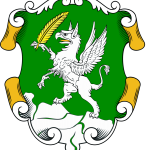The mosque is situated at Bit Pazar (green Market) in Skopje and belongs among the first edifices built by the ottomans. The information on the year of its building and its builder comes from the inscription in stone above the main entrance to the mosque. Written in Arabic, it states that the mosque was built in 1438-39 and that its patron, who commissioned its building, was Ishak Bey, son of Pasha Yigit Bey, the prominent Turkish border-area voivode and the Sultan’s second governor of Skopje. It was extended in 1519 by Hassan Bey, Ishak Bey’s grandson, information that comes from the inscription above the small door on the east wall. The name aladza (tur. colourful, painted) probably comes from the rich decoration which once adorned the mosque, but which does not survive.
It belongs to the zaviye type of mosques (small religious Muslim cloister), with lateral extensions which probably became an integral part of the prayer area during repair work carried out at a later time. The porch stretches along the entire north side, supported by four massive stone columns. The prayer hall and the lateral parts are vaulted with domes, while the lateral extended parts and the central part of the porch are covered with semi-cylindrical and barrel vaults.
The resplendent decorative elements that adorned the mosque existed until the earthquake of 1963; today, they can be seen only in fragments on the porch arches. The decoration applied in the rumi style was made in low stone relief. The rich relief decoration is also encountered in the interior of the mosque, on the arches and pendentives, while the dome is ribbed. The minaret, approximately 30 m high, is built of finely chiselled rectangular stone blocks, while the perforated parapet slabs on the sherefe (minaret balcony) and the rich stalactite decoration below it reflect the special attention given to it during its building. The mosque acquired its present-day appearance with the repair work carried out at a later time. The tűrbe of Pasha Bey is also part of the complex.
Mosque was built in the first half of the 15th century. According to Evliya Çelebi’s notes, it is believed to be the burial site of Ishak Bey Pasha’s son, also known as deli Pasha. It belongs to the type of closed tűrbes with a hexagonal base and a vaulted dome standing on an octagonal tambour. it is built of finely chiselled rectangular stone blocks. Each of its sides and the windows are framed in fully profiled frames with impressive sculptured stone elements in low relief, making the edifice particularly significant in aesthetic terms. the main feature that distinguishes it from the other structures of this kind and makes it unique in the Balkan region (except the Yeni Mosque in Bitola) is the use of blue, light blue, green and turquoise faience tiles in the decoration of the tambour of the dome and in the application of six-point stars and rosettes, two on each side.
A number of old grave markers also stand in the mosque’s courtyard which date from the period between the 16th and 19th centuries.
Bibliography:
Nikolovski A., Balabanov K., Kjornakov D., „Ishak beg xamija”, Spomenici na kulturata na Makedonija, Skopje 1980, 49.
Ayverdi E.H., avrupa’da osmanlı Mimari eserleri – Yugoslavya, iii. cild, 3.Kitab, İstanbul 1981, 255-258.
Kumbaradzi-Bogoevich, Osmanliski Spomenici vo Skopje, Skopje 1998 28-40.
Özer M., Üsküp’te türk Mimarisi (XiV-XiX y.y), atatürk Kültür dil ve tarih Yüksek Kurumu, Ankara 2006.
Pavlov Z., Ishak Bey (aladza) mosque, Ottoman Monuments, Cultural heritage protection office, Skopje, 2009, 72-75.
View Ottoman heritage of Skopje


